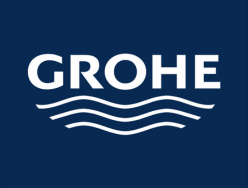
More than meets the eye
Berlin is a city where love is, as millennials put it, complicated, writes Jeremy Melvin.
But within its complex and contested fabric are many attractive and surprising instances. One of these is the outpost of the Akademie der Deutsche Kunst (ADK) in the Hansaviertel district, where in 1957, the prisoner-of-war turned city planner Werner Duttmann persuaded some of the leading mid 20th century architects including Alvar Aalto, Egon Eiermann and Oscar Niemeyer to produce housing projects. They became a prelude to the International Bauaustellung of the 1980s, which put Berlin, just prior to reunification, firmly on the architectural map.
To the 1950s-fest of social housing, Duttmann himself contributed the ADK, a fine example of enlightened arts building of that period. The large top-lit exhibition space and facilities for performance has something of the serenity Leslie Martin and Sandy Wilson achieved at the St Cross Building in Oxford, with the programmatic virtues of the Royal Festival Hall. One motivation behind it was ADK’s recent purchase of the Hans Scharoun archive, which makes it appropriate several times over as the setting for Sauerbruch Hutton’s exhibition, ‘Tracing Modernities: build draw love’ (until 31 January)

Duttman’s design and the ADK agenda also trace modernities, which in Berlin is just a little more complicated than locating buildings with white walls and flat roofs, though there are enough of those throughout the city to keep aficionados happy. Even if one limits Berlin’s modernities to architecture, it would pitch Scharoun against Mies, Behrens against Speer and many other piquant confrontations, all against the backdrop of totalitarianism against freedom.
Sauerbruch Hutton enter this maelstrom with what might be termed a confident modesty. One feels they know, with justification, that their work holds up within, and adds lustre to, this tradition, but they eschew the bombast of suggesting a conclusive answer to Berlin’s architectural dilemmas. Instead – and the exhibition includes many examples from outside the city – they place their own projects as subtle instances within a greater fabric, whether of Berlin, modernity or contemporary architecture.

Carefully interwoven within the exhibition are items from the ADK collection, such as a wonderful drawing by Scharoun called ‘The Upward and Downward Principles of Architecture’, a design for a Jewish community centre in Duisberg by Zvi Hecker. and a little gem by Hugo Haring. Another example is a drawing by one of the Lurckhardt brothers for the famous Berlin Alexanderplatz competition of 1929, which rivals in its seductiveness Mies’ famous rendering of the entire fabric as a uniform grey. These remind us, in turn, of the essence of architectural composition and the possibilities of what-might-have-beens, the imaginative world that the best architecture can explore.

Visitors will find here many of the projects which have established SH’s reputation, but what pervades is the sense of their design process. An example is a film made by Harun Farocki discussing six projects involving both Matthias Sauerbruch and Louisa Hutton and several colleagues. On one project there is discussion on how to turn the corner on a building of repetitive bays. It is rather like being transported back 500 years to hear Bramante talking about the impossibility of placing a corner column in the courtyard of a Renaissance palazzo without breaking the strict proportional system. SH realise some visual adjustment to the modularity is needed to satisfy the eye and debate how this might be achieved: it is both compelling and slightly voyeuristic because you are viewing their creative process in operation – and one where the eye, not theory, is the arbiter.

This insight gave me a key to understanding the large range of work on display. SH have always communicated the unity of form and idea in their projects effectively, often through bold graphics and arresting colours. This prioritises the visual and experiential as the key to architecture but in a different register; it also informs their reading of other buildings, the modernities the exhibition traces. The Lurckhardt Alexanderplatz sketch (by its reference to the competition) evokes the modernity of Berlin, which involves (but is not limited to) a great deal of social housing, both pre- and post-1945. Much of this was better designed and built than its counterparts across Europe, and its common affinities of elegant proportions and careful detailing imply what might be a datum point from which other architecture could emerge.

Visual imagination and appreciation of context come together frequently. One of the most powerful examples is the façade of the Brandhorst Museum in Munich, where thin vertical polychromatic strips play several roles: paraphrasing their text, preparing visitors for the aesthetic experience of the museum’s content (including Cy Twombly’s challenging series of paintings on the Battle of Lepanto), integrating the new building into its context, and making the whole read as a series of interlocking volumes rather than a monolith. The result is intriguing and satisfying, mediating between Munich’s culture and history and the specific collection, all achieved by visual means. Thinking visually, all too rare even among architects, becomes an intellectual and creative tool.

There is much more to see to which no review could do full justice. The best advice this writer can give is to see the exhibition. It transcends the ‘greatest hits’ model by presenting a serious proposition about the nature of architecture, expressed through one of the most important contemporary practices, skilfully positioned against the ‘modernities’ which have shaped its context. I can think of few more effective affirmations of the power of architecture to move the spirit while serving society.
All photos © Jan Bitter
Founder Partner






